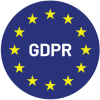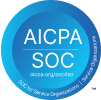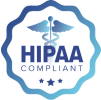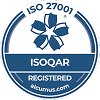Enterprises, SMBs, and start-ups share a common objective: business growth. Why? It aligns with acquiring new customers, adding revenue, and opening market segments. But you can’t grow your business without creating brand awareness and extending incoming customers’ lifetime value once prospects become first-time buyers. In other words, growth kills churn in its tracks as acquisition initiatives pay dividends over the long run.
This article will show that well-designed acquisition programs are essential platforms for long-term customer retention metrics to emerge. A Hubspot report supports this premise, showing that customer acquisition cost in the US is at least 5% of revenue and can go five times higher (i.e., up to 25%). Startups are an exception, frequently exceeding the max to scale up business faster and accelerate growth before competitors get wind of a disruptive influence.
What is customer acquisition?
It’s inducing prospects in targeted segments to buy your value proposition – product, service, or brand engagement. When you do it right, your acquisition program will attract leads, convert them into first-time buyers, and then, more crucially, nurture them until they repeat purchase and become brand loyal. The total cost involved – customer acquisition cost (CAC) – requires laser focus until you’re sure structured loyalty programs can take on the baton to maximize customer lifetime value (CLTV).
The High Cost of Ignoring Customer Acquisition Best Practices
While acquisition features emphatically in your strategy, failure to retain new customers will be severely counterproductive. According to a Harvard Business Review report, accumulating new customers costs 5 to 25 times more than holding on to them. So, if too many buyers enter your customer base and leave it without a second purchase, the overheads will balloon. Why? The pressure to replace them downgrades ROI. However, the ripple effect can be even more devastating. Consider the following:
- Attempts to scale your business take a massive step backward as internal income struggles to match lost acquisition investment.
- Negative feedback enters the equation as unhappy customers post unflattering reviews, blemishing your brand image and possibly your loyalty contingent.
- Replacing lost customers diverts attention and funds, resulting in under-invested or entirely missed loyalty initiatives that weaken retained customer relationships.
Acquisition vs. Retention: Why You Need Both
Retaining customers boosts profits by 25-95%. In short, business growth responds to a two-pronged, integrated strategy where:
- You protect against competitor attacks by consolidating customer loyalty and repeat buying with as few exits as possible.
- Acquire new business to ensure that customer inflow is enough to:
- Cover a controlled but inevitable outflow.
- Leave a profitable overflow.
How do you do this? Settling on a tried-and-trusted method that induces a first purchase and then engages your customers to buy repeatedly. In other words, it makes enough money to meet CAC’s relatively high acquisition demands, with funds left over to reinvest in loyalty initiatives (your primary growth generator).
A welcome side-effect is that investors, partners, and influencers become enthused, showing a willingness to support your future innovations and expansions – the essence of business growth.
The customer acquisition funnel explained
1. How does a customer acquisition funnel lead to loyalty?
While funnels are commonly used to describe a successful sales process, a funnel is another way of explaining your customers’ journeys through the acquisition process. It transcends several stages that must occur before loyalty initiatives become a realistic strategy. However, the latter should be in the wings, armed and ready to fly into action when prospects cross the divide as a de facto customer.
Reliable statistics reveal that unreadiness in securing customer loyalty significantly impacts your funnel investment in the wrong direction. Why? Non-retention-centric businesses traditionally lose up to 25 percent of their customers annually for the following reasons:
- Around 32% of consumers in the US (and 49% in Latin America) admit that one disruptive customer experience is enough to dissolve their love for a brand.
- Highlighted undesirable touchpoints that generate loyal customer churn include:
- Poor customer service (23.5%).
- Impersonal promotions, such as irrelevant content or offers (48%).
- After onboarding as a new customer, one discovers that the company’s values don’t align with brand promises (62%).
When you see the intricate customer acquisition stages below and what goes into them, failure to create loyalty continuance is a severe business error.
Stage 1 – Awareness: How to Attract Prospects
The task in this stage is to grab prospects’ attention to your brand’s benefits, ensuring that it’s a valid competitor in the tussle to satisfy their pain points in the best possible manner. In most instances, awareness tactics follow research identifying demographic market segments with needs responsive to your value proposition. For example:
- In mature markets, your prospects are already buying competitor brands, unaware of your potential to compete.
- In other cases, such as new product environments, it may be a free-for-all battle between several brands vying for early adopter attention.
So, how do you establish a position?
In the modern era, no matter how you eventually connect with prospects, they’ll go online to see what your website says and looks like. This goes for B2C and B2B awareness campaigns.
In many markets, physical products or services have reached a point where every reputable supplier offers more or less the same package.
- It means that differentiation rests in how creatively your content expresses and communicates the same thing your competitors are saying.
- Presentation and image are sometimes everything.
-
Here are a few tips to consider.
- Ensure your website is eye-catching, your graphics exceptional, your content consistent with brand positioning, and your CTAs effective. If you misstep at this touchpoint, the audience will bounce and probably never return.
- The same goes for a PPC (pay-per-click) ad campaign, driving your audience to your site or app page. If it’s the latter, not only do you want the prospect to subscribe but also to try the app for the first time. Don’t hesitate to deploy:
- Professional digital marketing monitoring
- A/B testing
- Campaign structuring to ensure your PPC investments go a long way
- Customer awareness responds to free trials, deep discounts as introductory offers, and as much personalization as you can inject into launch campaigns.
- Extend your PPC and website impact with YouTube videos, podcasts, blogs, encouraging customer reviews, and online customer interaction with live chats or bots.
- Invest in an SEO strategy to get the most traction quickly (see more below).
- Finally, investigate your target prospects’ influencers and aspiration groups. It’s an open sesame to:
- Early endorsement and creating a brand image
- Establishing an SM presence outside of PPC, blogs, and other options mentioned above.
Customer acquisition strategy’s best-kept secret: Micro-segmentation
Getting noticed is an incredibly challenging stage, fighting competitors from all sides doing what you are doing. Savvy startups that get traction quickly attribute their success to micro–segmentation. What’s this?
- Zone in on highly defined customer groups with laser-focused features that succeed in exciting the majority of buyers in mini-markets (otherwise referred to as splinter segments).
- It’s the opposite of aggregation – aiming for massive population audiences with a more generalized product to capture small pieces of it.
- For example: The idea is to appeal to 40% of a 5,000 targeted population to acquire 2,000 customers instead of 2% of a 100,000-person marketplace.
In short: The more defined your prospect is demographically, behaviorally, and psychographically, the more chance you have of resonating as a desirable brand option.
Stage 2 – Interest Merging with Conviction: Nurturing Leads
Interest and conviction may seem like two separate stages, but they are frequently hard to separate within the customer acquisition process. For example:
- Sometimes, interest lingers independently for days or weeks, and in B2B situations, months before prospects are ready to pull the trigger.
- On the other hand, it may move at the speed of light, making it impossible to know when or how interest hardened into a determination to buy.
The bottom line is that once you have confirmed your audience’s awareness and readiness to learn more, a compelling promotional effort is required to close the deal.
Your strategy relies on awareness-type promotional initiatives but with a different slant. The two notable additions are pitch decks and webinars (see below):
- Reminder emails reinforce your benefits and emphasize your branding.
- Campaigns may include six or seven at scheduled intervals.
- Subject lines are magnets, so make them punchy and on-point.
- Ensure the same theme in every email on the assumption that your audience members won’t read them all, and maybe only one.
- Deploy pulse surveys wherever possible, usually on a site landing page and emails with short questions like, “What caught your attention most convincingly in our introductory offers?” It’s the best way to identify prospects’ hot buttons. With relevant data at your disposal:
- Push for more influencer impact around it.
- Highlight it in your ads.
- Create special offers focused on it.
- Pitch decks of around ten slides yield fantastic results in B2B scenarios, communicating projected metrics, team skills, visions, missions, and central benefits in a personalized format.
- Webinars work in all markets, inviting interested prospects to hear the inside scoop, present real-time case studies, and include question-and-answer sessions.
- Continue with the PPC and SEO verticals, steering them to hit hot buttons uncovered by your surveys.
Stage 3 – Conversion: Closing the Sale
- Position call-to-action (CTA) opportunities on your website and all landing pages with content that prods prospects to buy your product or service.
- Create live and bot chat access to answer last-minute questions that may be holding the prospect back.
- Insert limited-time promotions or extra loyalty reward points for the first buy.
- Personalize the buying cart touchpoint to bolster your retention efforts. The latter begins as soon as the cash till rings.
- Maximize AI-powered payment system software that captures data, sends automatic welcoming messages, and accepts modern touch-and-pay technologies, making it contactless and as easy as saying your ABC. .
Data-driven customer acquisition strategies with industry-best AI-powered tools
The customer acquisition stages above perform fantastically with data analytics and the latest AI-enhanced software behind them. In fact, your success in this arena depends on springboarding off data patterns and insights.
The most favored go-to resources are as follows:
1. Leverage SEO & content marketing
A long-term strategy requiring patience is investing in an SEO strategy based on using tools like Semrush, Moz, and Ahrefs to locate the keywords with high repetition and low competition to get the most traction quickly.
2. Optimize paid social media campaigns
As mentioned, PPC is a compelling approach in the early acquisition stages to attract attention and generate prospect conviction. This involves:
- Media specialization available from digital marketing specialists at reasonable fees on freelancer sites like Upwork. These professionals will help you control costs and zone in on the most vibrant audience responses.
- Alternatively, sites like Google Ads, LinkedIn Ads, or Meta Ads Manager provide the resources to connect you to SM channels that align with your audience demographics.
3. Build a high-converting website
Personalization is the key to customer acquisition. So, engage your app page or site visitors by including omnichannel connection, inserted video communications, and AI chatbots that can transition to a human agent for complex questions in your online framework.
4. Track and monitor progress
- Your crucial SEO metrics such as website traffic and keyword rankings, with Google Analytics and Hotjar.
- Generating leads using tools like Salesforce, Hubspot CRM, Zoho CRM, or Sogolytics.
5. Referral programs
Customer referrals to friends are the most powerful customer acquisition drivers you can access. Suppose you have an existing customer base. In that case, you’re sitting on a goldmine of new leads but probably don’t know it. Here are some valuable take-home recommendations and insights:
- Build a program using Hubspot guidance or consult the Sogolytics team with years of experience.
- B2C incentives in the form of discounts, gifts, and loyalty points stream referrals and leads into your prospect pool. Why?
- Brand loyal customers already in the fold welcome a company-subsidized nudge to share product and service experiences with their peer groups.
- Satisfied B2B customers don’t require an elaborate push. Simply asking for a referral does the trick.
- In short, when you have consolidated enough retained customers, leverage them to the max. They’re generally happy to share stories about excellent service and brand experiences.
6. Implement account-based marketing
Account-based marketing (ABM) is the epitome of B2B personalized selling, focusing on micro-segments versus a broad, mass marketing approach. Instead, ABM targets highly selective accounts reflecting pinpointed pain points with customized solutions. It leads to:
- A sales enablement approach that includes collaboration between sales, marketing, and other divisions, ensuring an inclusive strategy to engage targeted prospects.
- Building robust, lasting relationships with key decision-makers.
- Easy-to-measure KPIs that connect to increased revenue, accelerated customer retention, and boosted ROI.
7. Reduce CAC with retargeting campaigns
You can revitalize latent interest. How?
- Re-connecting churned customers or prospects who abandoned the funnel at or before it reached the buying cart.
- Appeal to past prospects and buyers susceptible to “let’s give them a second chance” thinking.
Again, how? By leveraging data analytics to probe your archives and identify viable retargeting prospects. Implemented correctly, these deliver mind-boggling recruitment benefits, such as:
- Identifying candidates in a fraction of human team time and significantly more accurately.
- Populating emails and social media promotions with personalized messages, thus providing extra engagement power and persuasive brand reminders.
- Reducing CAC by starting at the interest stage in the sales funnel, bypassing heavy investment to capture attention.
- Discover conversion rates are substantially higher.
Real-world examples
B2C Success – The Dollar Shave Club (DSC)
DSC leveraged video marketing that presented an entertaining and comedic vision of the traditional razor market that went viral, breaking through the awareness and interest stages of the sales funnel like a juggernaut. The social media engagement created a hockey stick upward surge in units sold, alongside irreverent tone messaging and catchy lines that made the disruptive brand memorable.
- The company engaged with users constantly on SM channels, commenting on shared experiences and hitting long-suppressed but (nonetheless) broadly felt pain points head-on.
- Word-of-mouth momentum took over, and a mainstream brand disrupting a mature market was born.
- Compared to Gillette’s relatively traditional “masculinity and strong-chin” image, DSC’s funky, no-nonsense, free-spirited style resonated extraordinarily well with Millennials and Gen Zs. They loved:
- Dollar Shave’s subscription model.
- Bypassing the middle retail distributors.
- Lower prices alongside a meaningfully different customer experience.
- The net result was rapid growth, rapidly growing customer loyalty, and a striking example of market disruption success that springboarded off an incredible customer acquisition launch.
B2B Success: Salesforce’s ABM Strategy for Enterprise Clients
Personalized, targeted marketing focused on high-value accounts summarizes Salesforce’s ABM success story, reflecting unsurpassed performance metrics in their enterprise client categories.
The company maximized its AI-powered resources to customize solutions that thrived on building strong relationships, shortening sales cycles, and staying ROI-centric. More specifically, here are their most penetrative initiatives:
- They segmented their accounts by meaningful revenue-centric constructs, with spending patterns as a central consideration.
- The data analytics generated fine details related to the decision-makers in client committees, alongside itemizing each one’s primary and secondary pain points.
- Sales enablement impacted the picture, creating sales, marketing, and other divisional team collaboration. How? Digitally and through omnichannel sharing of goals and strategies.
- One of the most impressive thrusts came from an ABM system that scaled initiatives via a “successful project” library and a robust process that paved an access path to it.
In short, Sales Force discovered and developed a program that prospected, nurtured, and consolidated new relationships rapidly. Moreover, its reporting and tracking of ABM performance was second to none.
How a professional customer acquisition partner can revitalize your business
Relying on CAC and Other Crucial Metrics as a Guide
Sogolytics is a customer experience data analytics and research leader, helping clients conquer their challenges with crucial KPI monitoring.
Our team knows everything there is to know about maximizing customer acquisition through automatic and tailored CLV, conversion rate, and churn rate calculations.
For example, we can help you to reduce CAC based on the formula Total Acquisition Spend / Number of New Customers. Our analytics – confirmed by reliable third-party research – indicate the following industry yardsticks:
- Retail (e-commerce): $10 – $200
- SaaS: $200 – $1,200
- Real Estate: $500 – $3,000
- B2B: $500 – $2,000
- Financial Services: $100 – $1,500
- Health and Pharmaceuticals: $50 – $500
- Travel and Hospitality: $20 – $200
- Automotive: $300 – $1,500
Where you fall within the range is one thing; our expertise will get you to the bottom of the scale with resources famous for solidifying lead quality using marketing automation, A/B testing, and SM guidance technologies.
Sogolytics’ focus falls on every aspect of customer acquisition from covering every sales funnel stage to selecting and applying the strategies that fit the circumstances in each case. We remove trial and error costs from the equation with motivated solutions that account for personalization, measured email campaigns, selective media deployment, and CTAs that get the results you expect.
Contact us today for a comprehensive overview of your customer acquisition strategy needs and never look back.
FAQs
1. What is customer acquisition, and why does it matter?
A: It’s inducing prospects in targeted segments to buy your value proposition – product, service, or brand engagement. When you do it right, your acquisition program will attract leads, convert them into first-time buyers, and then, more crucially, nurture them until they repeat purchase and become brand loyal. The total cost involved – customer acquisition cost (CAC) – requires laser focus until you’re sure structured loyalty programs can take on the baton to maximize CLTV.
2. How do you calculate customer acquisition cost (CAC)?
A: Total Acquisition Spend / Number of New Customers.
3. What are the best channels for customer acquisition?
A: SM PPC, emailing, SEO content on app pages and websites, pitch decks, videos on YouTube, podcasts, and webinars.
4. What’s the difference between customer acquisition and retention?
A: Business growth responds to a two-pronged, integrated strategy where:
- You protect against competitor attacks by consolidating customer loyalty and repeat buying with as few exits as possible.
- Acquire new business to ensure that customer inflow is enough to:
- Cover a controlled but inevitable outflow.
- Leave a profitable overflow.
5. What are the primary resources essential for customer acquisition success?
A:
- SEO strategy – Semrush, Moz, and Ahrefs to locate the keywords with high repetition and low competition to get the most traction quickly.
- Media specialization – Marketing specialists at reasonable fees on freelancer sites like Upwork.
- SM channels that align with your audience demographics – Sites like Google Ads, LinkedIn Ads, or Meta Ads Manager
- Tracking and monitoring your crucial SEO metrics such as website traffic and keyword rankings – Google Analytics and Hotjar.
- Generating leads – Salesforce, Hubspot CRM, Zoho CRM, or Sogolytics.
- Referral programs – Hubspot guidance or consult the Sogolytics team.












